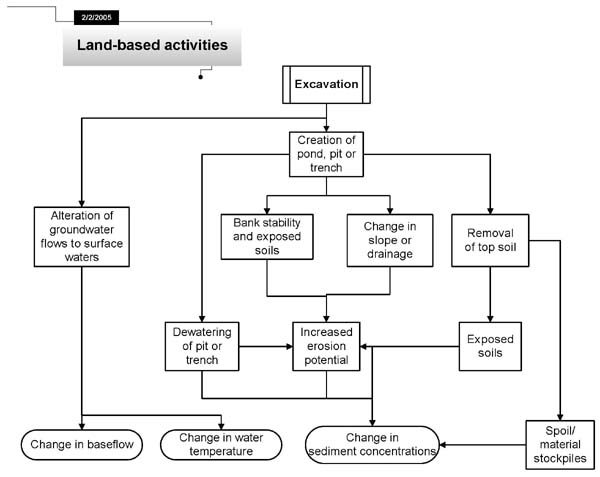Excavation
Land-Based Activities
The process of removing soil and rock from the land. It does not include grading or dredging. This is achieved through mechanical cutting, digging, or scooping which leaves a cut, cavity, trench, or depression in the land surface.
NOTE:
Pathways of Effects diagrams have been developed by Fisheries and Oceans Canada as a tool to communicate potential effects of development proposals on fish and fish habitat and were developed through extensive consultation. It is expected that these diagrams will be updated to describe new activities and stressors as required.

Effects
Change in base flow: An alteration in the quantity of groundwater flowing into springs, streams, rivers, lakes and wetlands caused by a change in land use and land surface characteristics.
Change in water temperature: Water temperature directly affects many of the physical, biological, and chemical characteristics of a waterway. In elevated temperatures, many coldwater fish, such as trout and salmon, could experience reduced reproductive activity or direct mortality, including egg mortality. High temperatures also encourage the microbial breakdown of organic matter, leading to a depletion of dissolved oxygen in the water body.
Change in sediment concentrations: Increased erosion of stream bank soils and rocks result in an excess of fragmented organic and inorganic material which is transported by water, wind, ice, and gravity. These sediments, which contain nutrifying elements and can capture or absorb contaminants, are suspended or else settle and collect in waterways affecting physical processes, structural attributes, and ecological conditions such as water clarity (by reducing visibility and sunlight and damaging fish gills) and reducing the availability and quality of spawning/ rearing habitat (through infilling).
- Date modified: